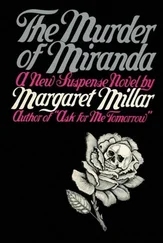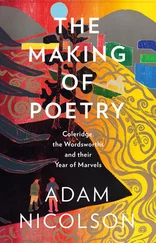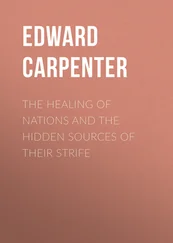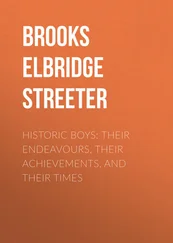Маргарет Миллар - The Birds and the Beasts Were There
Здесь есть возможность читать онлайн «Маргарет Миллар - The Birds and the Beasts Were There» весь текст электронной книги совершенно бесплатно (целиком полную версию без сокращений). В некоторых случаях можно слушать аудио, скачать через торрент в формате fb2 и присутствует краткое содержание. Город: New York, Год выпуска: 1967, Издательство: Random House, Жанр: Природа и животные, на английском языке. Описание произведения, (предисловие) а так же отзывы посетителей доступны на портале библиотеки ЛибКат.
- Название:The Birds and the Beasts Were There
- Автор:
- Издательство:Random House
- Жанр:
- Год:1967
- Город:New York
- ISBN:нет данных
- Рейтинг книги:4 / 5. Голосов: 1
-
Избранное:Добавить в избранное
- Отзывы:
-
Ваша оценка:
- 80
- 1
- 2
- 3
- 4
- 5
The Birds and the Beasts Were There: краткое содержание, описание и аннотация
Предлагаем к чтению аннотацию, описание, краткое содержание или предисловие (зависит от того, что написал сам автор книги «The Birds and the Beasts Were There»). Если вы не нашли необходимую информацию о книге — напишите в комментариях, мы постараемся отыскать её.
The Birds and the Beasts Were There — читать онлайн бесплатно полную книгу (весь текст) целиком
Ниже представлен текст книги, разбитый по страницам. Система сохранения места последней прочитанной страницы, позволяет с удобством читать онлайн бесплатно книгу «The Birds and the Beasts Were There», без необходимости каждый раз заново искать на чём Вы остановились. Поставьте закладку, и сможете в любой момент перейти на страницу, на которой закончили чтение.
Интервал:
Закладка:
“Nonsense. Only human beings have time to waste admiring themselves. He is looking for food. Among the smaller birds, the search for food occupies most of their waking hours. The next time you hear the expression, ‘to eat like a bird,’ remember that a robin can eat sixteen feet of earthworms in a day. It would be much simpler for him,” she added thoughtfully, “if he could eat one earthworm sixteen feet long, but perhaps that wouldn’t be so pleasant for the rest of us. It would certainly cause a sharp decrease in the number of home gardeners.”
The bird, meanwhile, had sallied forth, picked a small dragonfly off the surface of the water and returned to its perch. I watched him while Mrs. Beals explained that the first thing I should do when I encountered a new bird was to notice the shape and size of his bill because this indicated what type of food he was best equipped to eat. The thin bill of the little flycatcher wasn’t intended to crush seeds like the short bill of the even littler Oregon junco who’d come down to the creek to bathe. In general, she said, insect eaters like flycatchers, warblers, thrushes and wrens had thin bills, while seed eaters like finches and grosbeaks and buntings had thick bills.
It was the kind of simple basic lesson I needed and wanted, but a long time was to elapse before I automatically looked first at the bill of a new bird.
By now, Mr. Rett was some hundred yards ahead of us. As Mrs. Beals and I hurried to catch up with him, I asked her why she had signed up for the course. She explained that she had just moved to Santa Barbara and wanted to find out about our best birding areas, and, since she didn’t drive, ways of reaching them and people to go with. On this last score, she indicated, the class was a big disappointment — as far as the members were concerned, it could just as well have been a course in skin diving or diamond cutting; none of them paid the least attention. I clued her in, as gently as possible, to the fact that the class was for credits, not condors or cranes.
Mr. Rett hadn’t missed our company. We found him sitting on a boulder, talking to a small yellowish bird that was moving impatiently through the narrow grey leaves of a low-growing shrub. Mrs. Beals identified the bird for me as a yellowthroat and the shrub as a variety of buckwheat.
It was a charming scene, the little man and the little bird engaged in earnest conversation.
“Check.”
“Double check.”
“ChecK, checK, checK, checK, checK .”
What they were saying, I don’t know. But I like to think that I was witnessing something more than just a man imitating a bird. (This scolding or protest note of the yellowthroat, which sounds like checK to me, Dawson translates as wzschthub . Try saying this with your mouth full of peanut butter — it’s the only way to do it.)
At the time of this writing, a pair of yellowthroats are the star boarders at our feeding station. Although these are birds of the marsh and tule, the salicornia and slough, they can also be birds of the porch and the ledge or any other place where they’re able to cadge their favorite food, doughnuts. When the larger birds like the jays, thrashers and flickers, and the flocking ones like the cowbirds, house finches and white-crowned sparrows, have finished eating and deserted the premises for a while, the smaller and more solitary birds start to appear, normally singly, sometimes in pairs: the wrentit, the orange-crowned warbler, the Lincoln sparrow, the Bewick’s wren, and of course, the yellowthroat. We usually see the male first. His black mask edged with white may serve as effective camouflage among the lights and shadows of a tule marsh, but on our ledge he is as conspicuous as a butterfly in a bathtub.
The female, having no black mask to hide behind, is more circumspect. We don’t see her as frequently, and when we do she is seldom on the ledge. She prefers less open, less obvious places, like under the floorboards of the porch, or the shrubbery around certain bird baths, or the bottom parts of the privet hedge and the bougainvillea vines.
Beginning birders, on catching sight of the female yellowthroat, are inclined to mistake her for other warblers of our area, especially the orange-crowned and the yellow. She is much more wrenlike than either of these, both in profile — her head is flatter and her bill longer and somewhat downward curved — and in habitat, preferring the ground and low shrubbery rather than trees. The yellowthroat was, in fact, formerly known as the tule wren and the scientific name for the species, Gcothlypis trichas, means a bird that’s confined to the ground.
When disturbed, both the male and the female will utter the protest sound, checK , or, if you prefer, wzschthub . But only the male has the ability to sing. Bewitchedy, witchedy, witched, be-witchedy, witchedy witched . Perhaps he is warning the bird world that he is indeed bewitched, but that at any moment the spell will end and he will take off his mask and reveal what he really is, at least an eagle.
During the mid-morning break I had a chance to ask Mr. Rett about Houdunit’s strange relationship with the hubcap and the two windows. He said that most birds, and many mammals as well, will defend their territory vigorously against other members of the same species. This territorial fighting among birds is more or less ritualized and no real harm is done to the contestants, though some observers have seen blood drawn in boundary disputes between brown towhees.
The towhee in the hubcap, the second one in the lanai window and the third in the bathroom window were, to Houdunit, interlopers who had to be driven off, contenders for his title, his food supply and his nesting sites. The trio’s persistence must have cast doubts in Houdunit’s mind about his ability as a fighter, but he didn’t give up. Instead, the sun gradually changed position in the sky and obliterated his enemies.
I also asked Mr. Rett to imitate the call note of a brown towhee. He replied what sounded to me exactly like chin .
Would you believe wzschthub ?
4
You’re a Stool Pigeon, Mother
At noon the class returned to the Museum of Natural History for lunch. The meal was planned, prepared and served by Junior Aides — a number of girls in their early teens who did volunteer work at the museum during the summer and after school hours. The girls also made up their own menus, which were printed on a blackboard and offered such delicacies as:
We ate outside at redwood picnic tables under a huge live oak tree. Unfortunately there was a heavy infestation of oak moths that year so the Junior Aides were able to add an unexpected item to their menu, oak moth larvae. The wiggly little creatures seemed to hang from every leaf, and the lightest brushing against an overhanging branch netted at least fifty of them on your clothes and in your hair, and naturally the odd one dropped into a sand witch or a dam burger. Some members of the class made fast and shrill departures.
Marie Beals was undismayed. “It’s all good honest protein.”
The oak moth larvae turned out to be the lesser of two evils associated with eating in the museum patio that summer. The other was Melanie.
The name was well chosen since it comes from the Greek word for black, and Melanie was black indeed. Black as coal, black as night, black as ebony or jet, black, in fact, as the raven she was; black of feather, of foot, of bill, of eye, and most definitely, of heart.
I was later told that Melanie had been found when she was about a month old, on Santa Cruz Island, some twenty-five miles offshore from Santa Barbara. Raised as a pet by a family who lived near the museum, Melanie spent her first year developing her wings and practicing the aerial acrobatics of her kind. She stayed close to home since she was fond of her adopted family and knew a good thing when she saw one. There was an additional reason: ravens are very scarce in our area. She was not tempted to join a pair of strong black wings tumbling and soaring and diving in the air, and no male voice, curiously softened and symphonized by love, called her away.
Читать дальшеИнтервал:
Закладка:
Похожие книги на «The Birds and the Beasts Were There»
Представляем Вашему вниманию похожие книги на «The Birds and the Beasts Were There» списком для выбора. Мы отобрали схожую по названию и смыслу литературу в надежде предоставить читателям больше вариантов отыскать новые, интересные, ещё непрочитанные произведения.
Обсуждение, отзывы о книге «The Birds and the Beasts Were There» и просто собственные мнения читателей. Оставьте ваши комментарии, напишите, что Вы думаете о произведении, его смысле или главных героях. Укажите что конкретно понравилось, а что нет, и почему Вы так считаете.
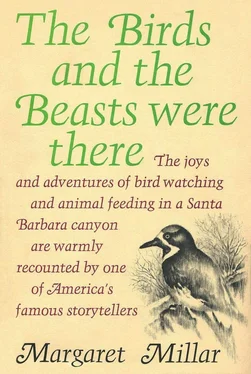
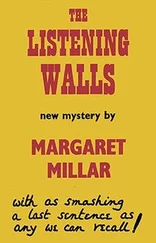
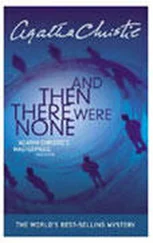
![Маргарет Миллар - Rose's Last Summer [= The Lively Corpse]](/books/384369/margaret-millar-rose-s-last-summer-the-lively-c-thumb.webp)

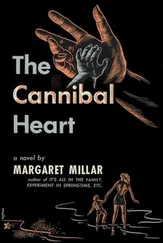
![Маргарет Миллар - The Iron Gates [= Taste of Fears]](/books/433837/margaret-millar-the-iron-gates-taste-of-fears-thumb.webp)
